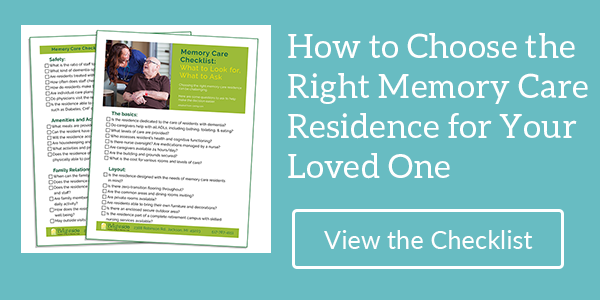Dementia is one of the most insidious conditions afflicting humanity — people of every race in every country around the world. As we age, dementia becomes more and more likely and, according to dementiastatistcis.org, “The number of people with dementia globally is estimated to be 50 million. Currently, this is greater than the total population of Spain and is projected to nearly triple by 2050.” Even as research into dementia and diseases like Alzheimer’s has increased in the recent past, The World Health Organization’s Dementia Fact Sheet 2017 states, “Globally, the numbers of people living with dementia will increase from 50m in 2018 to 152m in 2050, a 204% increase.”
Foods That Fight Dementia
Despite these seemingly hopeless numbers, there are things we can do to lessen the risk of dementia including embracing a lifestyle that includes a healthy diet. One study about dementia and the Mediterranean diet, “seem[ed] to show an association between the Mediterranean diet and lower levels of memory and thinking problems.” Specifically, the study showed consumption of plenty of fruits and vegetables “may help to protect against some of the damage to brain cells associated with Alzheimer’s disease, as well as increasing the levels of proteins in the brain that protect brain cells from this damage.”
Another way to approach dietary changes to diminish risk of dementia is to combine the Mediterranean diet and the DASH diet. DASH stands for Dietary Approaches to Stop Hypertension. Together they are known as the MIND diet, or Mediterranean-DASH Intervention for Neurodegenerative Delay diet, which addresses both heart and brain health.
The research behind the MIND diet included looking at foods touted by the DASH and Mediterranean diets and singling out those that were found to show the most promise in preventing dementia. Dark green and other vegetables made the list, along with berries, although other fruits did not. In addition, researchers tracking older study participants through eating logs found those following the MIND diet to be years (7.5 years to be exact) sharper mentally than those who did not.
MIND Diet Rules
In the Mayo Clinic blog, “15 Simple Diet Tweaks That Could Cut Your Alzheimer’s Risk,” author Angela L. Murad offers a list of MIND diet rules you can use to see where your current diet lies compared to the healthier alternative that includes:
- “At least three servings of whole grains a day.
- Green leafy vegetables (such as salad) at least six times a week.
- Other vegetables at least once a day.
- Berries at least twice a week.
- Red meat less than four times a week.
- Fish at least once a week.
- Poultry at least twice a week.
- Beans more than three times a week.
- Nuts at least five times a week.
- Fried or fast food less than once a week.
- Mainly olive oil for cooking.
- Less than a tablespoon of butter or margarine a day.
- Less than a serving of cheese a week.
- Less than five pastries or sweets a week.
- One glass of wine or other alcoholic drink a day.”
Murad recommends giving yourself one point for each “rule” followed and offers the caveat that, “You don’t have to have a perfect diet to benefit. While the adults in the study who followed the diet most closely (an average score of 9.6 points out of 15) saw the biggest drop in their Alzheimer’s risk, the ones who scored in the middle (7.5 points) still cut their risk by over a third.”
Interestingly, high adherence to the DASH diet and the Mediterranean diet also lowered dementia risk, but moderate compliance with these two diets did not significantly decrease rates of Alzheimer’s disease.
Foods That May Cause Dementia
Now that you know what you should eat, the other side of the diet coin is what you should not eat. The Alzheimers.net blog, “Nutrition and Dementia: Foods That May Induce Memory Loss & Increase Alzheimer’s” looks at what the brain needs to do a good job and zeros in on those foods that work against brain health and increase the risk of memory loss and Alzheimer’s. For Americans, the worst foods are also among the most common in our daily diets: “White breads, pasta, processed meats and cheeses, all of these have been linked to Alzheimer’s disease.”
According to the blog, different types of foods associated with increased risk of Alzheimer’s wreak havoc in different ways that ultimately negatively impact the brain and how it functions. These include:
- “Processed cheeses, including American cheese, mozzarella sticks, Cheez Whiz and Laughing Cow. These foods build up proteins in the body that have been associated with Alzheimer’s.
- Processed meats, such as bacon, smoked turkey from the deli counter and ham. Smoked meats like these contain nitrosamines, which cause the liver to produce fats that are toxic to the brain.
- Most beers contain nitrites, which have been linked to Alzheimer’s.
- White foods, including pasta, cakes, white sugar, white rice and white bread. Consuming these causes a spike in insulin production and sends toxins to the brain.
- Microwave popcorn [that] contains diacetyl, a chemical that may increase amyloid plaques in the brain. Research has linked a buildup of amyloid plaques to Alzheimer’s disease.”
For those who have spent a lifetime eating fast food, Wonder bread, beef jerky, and fried chicken and cheese sticks, it’s not too late to change! Since alterations in the brain contributing to dementia can begin years before symptoms are noticed, mid-life dietary changes are considered helpful in reducing dementia risk in later years. Add to that exercise, stress reduction and avoiding cigarettes and second-hand smoke, and you really can make a difference in how healthy you will be in your golden years!
For information about Countryside, please call Margaret Nagel at (517) 206-5000 or download our brochure to learn about our care levels, cost, and amenities.


